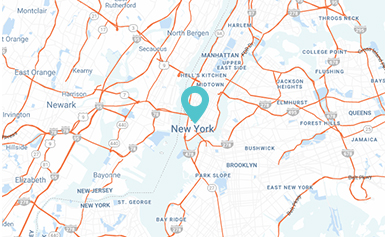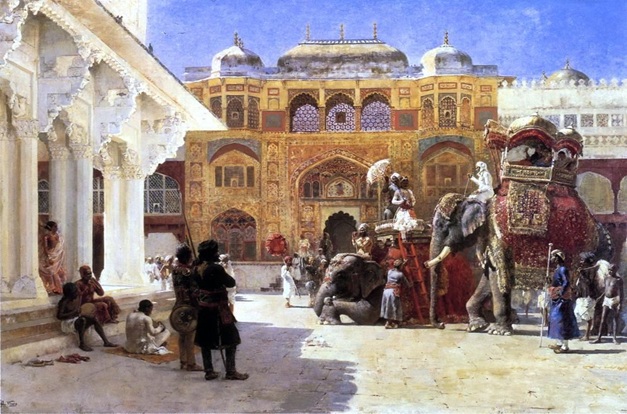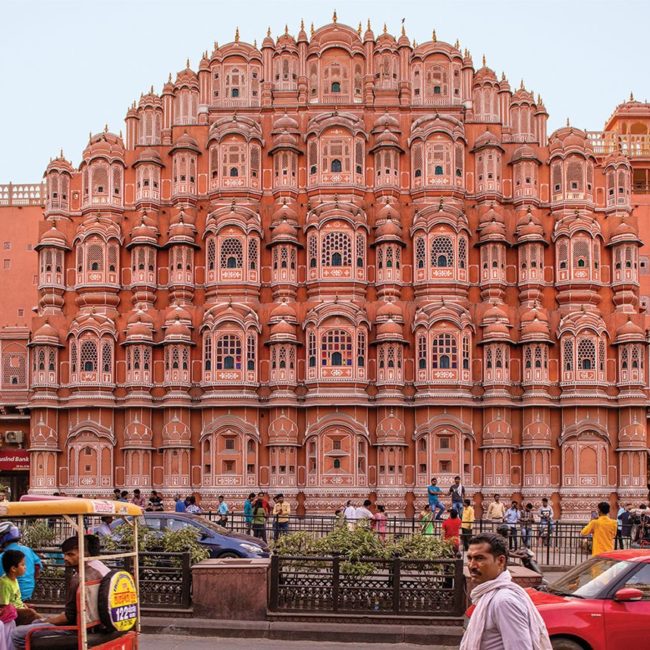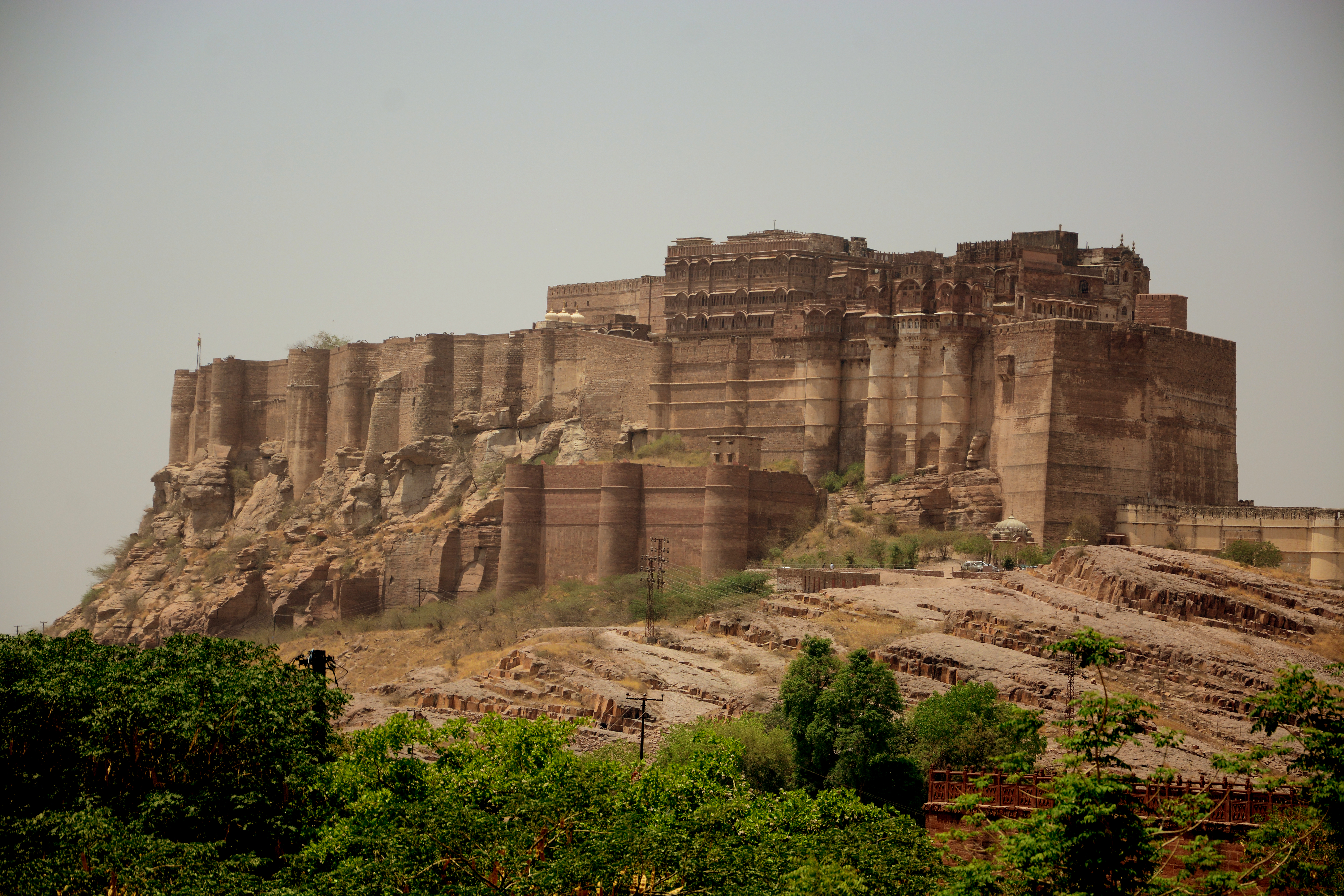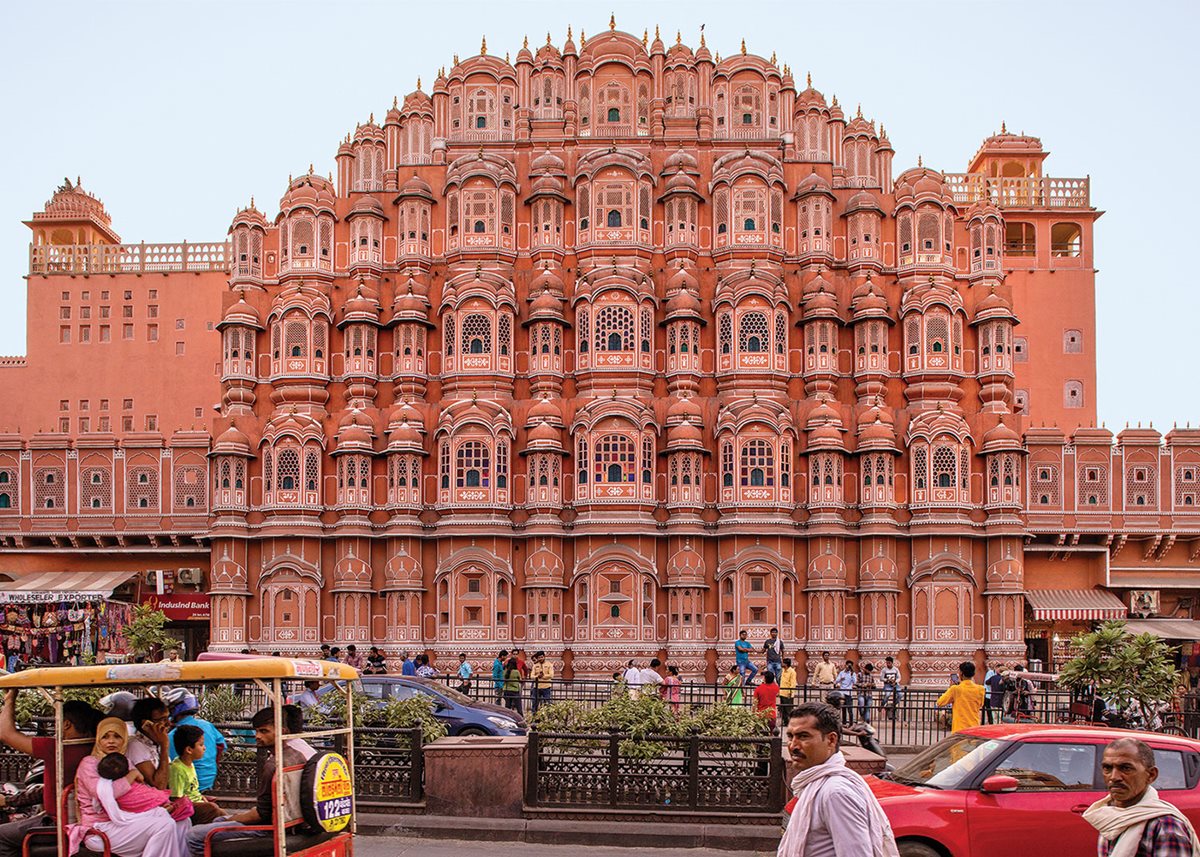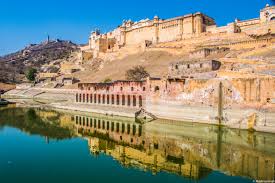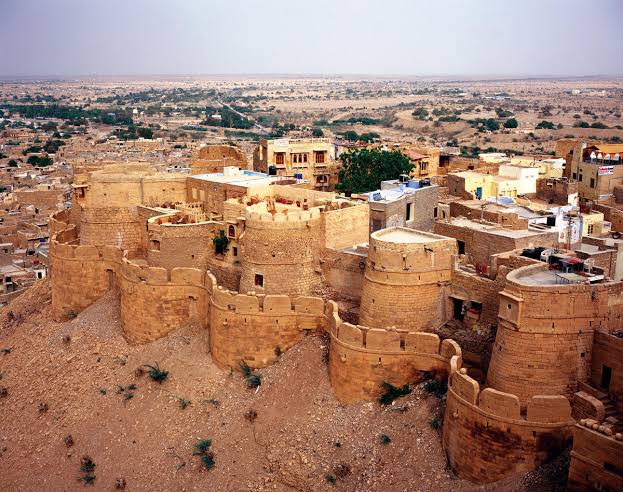Tour Plan
1
Day 01: Arrive Delhi.
Arrival at Delhi, you will be met by our TIME representative at airport, later transfer to the Hotel
Check-in at the hotel.
Delhi, the Empress of Indian cities has a fascinating history and a stimulating present. She has often been sacked and left naked and desolate. But she could not be despoiled of the incomparable situation that marks her for the metropolis of a Great Empire. The capital of India, Delhi has been the seat of power of a number of dynasties – the Rajputs, the Afghans, the Turks and the Mughals who continued their imperial line until the British. Scattered over are surviving ruins, remnants of mighty edifices, tombs of warriors and saints, which in an impressive sense of magnificence are memorials not of a single city but of supplanting nations.
Overnight in Delhi.
2
Day 02: In Delhi
Morning after breakfast, proceed for the full day sightseeing of Delhi.
Old Delhi photo stop at the great Red Fort, the 300-year-old walled city built by Emperor Shah Jehan in 1648 as his capital and named after him. The magnificent Red Fort built of red sandstone dates from the very peak of the Mughal power, Opposite the fort are the black and white onion dome and minarets of the Jama Masjid, the most elegant mosque in India. Drive past Kotla Firoz Shah, ruins of an old fort of the 14th century with the 13-meter-high Ashoka Pillar of 3rd BC. Visit Raj Ghat, where Mahatma Gandhi was cremated in 1948. Drive through the old city subject to traffic restrictions.
Rickshaw Ride through the street of old Delhi.
Later in the afternoon proceed for the sightseeing of New Delhi.
New Delhi the new capital designed by Sir Edward Lute’s. Drive past the Presidential Palace, the Rashtrapati Bhavan and the secretariat buildings - the centre of all government activity and down the main avenue, the impressive Rajpath to the World War I memorial arch, the India Gate, the High Court Building and the Old Fort. Visit Humayun’s Tomb built in 1565 AD by his grieving widow Haji Begum, the Qutub Minar, 72 meters high and the ruins of Quwat-UL-Islam (Light of Islam) Mosque. See Delhi’s most curious antique, the uncorroded Iron Pillar, which dates back Hundreds of Years.
Return to the hotel. Evening free at leisure.
Overnight in Delhi.
3
Day 03: Delhi – Agra (210 kms / 4hrs.)
Morning after breakfast, drive to Agra.
On arrival check-in at the hotel.
Agra, the city known for the famous monument of love - the Taj Mahal. The Mughal Emperor, Shah Jehan, constructed Taj Mahal. It is said he built this monument in the memory of his beloved wife Mumtaj Mahal. The Taj Mahal is ethereal at any part of day, blushing in the rosy glow of dawn or sunset, appearing like a pearly mirage in moonlight or reflected in the pools of the garden. Perhaps the most moving view of Taj is from an octagonal tower in the Agra Fort further along the river Yamuna. There are very few cities in the world that can match the history and heritage of Agra. Located at a distance of 204 km south of Delhi, Agra is the single most famous tourist destination of India. Situated on the west bank of River Yamuna, Agra is a part of the great Norther Indian plains. The architectural splendor of the city is reflected in the glorious monuments of medieval India built by great Mughals who ruled India for more than 300 years.
Rest of the day free at leisure.
Overnight in Agra.
4
Day 04: In Agra.
Morning after breakfast, proceed for the sightseeing of Agra.
Taj Mahal (Closed on Friday) with its incredible lacy white grandeur the Taj Mahal is perhaps the most perfect architectural monument in the world. To the poet Tagore it was a tear on the face of eternity'. In memory of his wife the great Mughal emperor Shah Jehan constructed this most extravagant and incomparable monument built for love. Amazingly graceful from any angle, it is the close-up detail, which is really astounding.
Agra Fort is situated on the banks of the river Yamuna, another monumental mission accomplished by the great Mughal visionary Emperor Akbar. His son Jehangir and grandson, Shah Jahan added to this imposing structure during their rule. The palaces, mosques and audience halls contained within its massive wall of red sandstone are perfect examples of blending Islamic and Hindu traditions.
Also visit the marble inlay workshops & local markets.
Overnight in Agra.
5
Day 05: Agra – Jaipur enroute Fatehpur Sikri (245 kms. / 5hrs.)
Morning after breakfast, drive to Jaipur, enroute Fatehpur Sikri.
35kms outside Agra is Fatehpur Sikri, the abandoned red sandstone city built in the 16th century by the Mughal Emperor Akbar, one of India's greatest rulers. Remarkably broadminded for his time, this Muslim king married a Rajput princess in order to win over his Hindu subjects. The architecture of Fatehpur Sikri is a combination of Hindu and Muslim styles, expressing Akbar's vision of synthesizing the cultures.
Later continue drive to Jaipur. On arrival check-in at the hotel
Jaipur is where the enduring charisma of the past blends with the throbbing vitality of today. Where a colourful cast of characters – from printers and potters to artists and antique dealers - present a fascinating picture of a city that is alive to both tradition and change. Raja Jai Singh, the founder of Jaipur was no ordinary man. He was a scholar and an astronomer, keenly sensitive to beauty, a formidable general, who tempered power with wisdom. In building Jaipur, Jai Singh's vision took him beyond architectural beauty for in the sprawling, barren plains beneath Amber, the former capital; he gave India its first planned city, which has remained unique in two and a half centuries. Jai Singh made Jaipur a haven and it became a centre of commerce and religion.
Overnight in Jaipur.
6
Day 06: In Jaipur
Morning after breakfast, proceed for the visit to Amber Fort.
Amber fort: This magnificent fort comprises an extensive palace complex, built from pale yellow and pink sandstone, and white marble, and is divided into four main sections, each with its own courtyard. Visit the fort via Elephants failing 4x4 Vehicle.
City Palace, a delightful blend of Mughal and traditional Rajasthani architecture, the City Palace sprawls over one-seventh of the area in the walled city. It houses the Chandra Mahal, Shri Govind Dev Temple and the City Palace Museum.
Jantar Mantar is the largest and the best preserved of the five observatories built by Jai Singh II in different parts of the country. This observatory consisting of outsized astronomical instruments is still in use.
Hawa Mahal, the ornamental facade of this "Palace of Winds" is a prominent landmark in Jaipur. It is a five-storey structure of sandstone plastered pink encrusted with fine trelliswork and elaborate balconies. The palace has 953 niches and windows. Built in 1799 by Pratap Singh, the Mahal was a royal grandstand for the palace women.
Overnight in Jaipur.
7
Day 07: Jaipur – Bikaner (335 kms / 6hrs.)
Morning after breakfast, drive to Bikaner.
On arrival check in Hotel.
Bikaner is a medieval flavoured city set along the old caravan route, which linked Central Asia & North India with the Gujarat seaports. Bikaner takes its name from Rao Bikaji, the sixth son of Rathore Rajput Prince, Rao Jodha, the founder of Jodhpur. Bhika set up his independent kingdom in 1488. Charming red stone havelis (mansions) (unlike the gold sand stone one’s of Jaisalmer) stand in the old part of this walled city and a leisurely lifestyle still prevails in this sublimely picturesque place surrounded by harsh desert.
Afternoon City tour of Bikaner.
Visit the Junagarh Fort, one of the finest of Rajput monuments. Paved courtyards, narrow staircases and terraces in this Rathore stronghold connect all thirty-seven palaces, pavilions and beautiful Jain temples built by different kings. One must take particular note of the designed ceilings of the various homes in this region - done either in wood or copper plates, which are then covered with intricate painting work.
Overnight in Bikaner.
8
Day 08: Bikaner – Jaisalmer (330 Kms/ 5 Hrs.)
Morning post breakfast, drive to city of Jaisalmer.
Founded by Prince Jaisal in 1156, Jaisalmer grew to be a major staging post on the trade route across the forbidding Thar Desert from India to the West. Set in a sea of golden tinged sand, Sonar Kila, a golden fort rises out of a rock of topaz. The entire living area of Jaisalmer lies within the gigantic citadel walls.
Remaining day at leisure.
Overnight in Jaisalmer.
9
Day 09: In Jaisalmer
Morning post breakfast, proceed for half-day city tour of Jaisalmer.
Visit the silent 12th century Fort built by Prince Jaisal and the Palace. The uniqueness of this fort is that it is the only ‘living fort’ only fort in Rajasthan – people still reside within the fort walls. The fort stands at the highest point (100 meters) above the marketplace. Also visit the Jain Temples (12th-15th century), which lie within the fort complex. Some of them have quaint but impressive figures of Jain saints of white marble and of red and black stone. Others have beautiful images of deities, which indicate the remarkable religious tolerance of that age. The famous art of the stone carvers of Jaisalmer is evident in the elaborate facades of the yellow sandstone desert havelis (mansions), which glow softly in honey tones. Visit intricately carved Havelis built by Merchants; the largest and most elaborate of the famous havelis of Jaisalmer is Patwon ki Haveli. Patwas were the merchants trading in rich brocades, gold and silver embroidery, sequins and ribbons. This family eventually expanded their business to include opium, banking and revenue collecting. A brief stop at Gandhi Sagar is a must – a manmade pond; a luxury in the center of the Thar Desert!
Afternoon camel safari at Sam sand dunes.
42 kms of Jaisalmer a place where one can experience the pace and space of desert life. Ride to the smooth, silky sands of Sam sand dunes where the Raikas (camel drovers) travel with their animals over vast distances and know every waterhole and posture in their region. They are the best guides. The Raika is a handsome, romantic figure, and in local legends and folk songs, he is referred to as the messenger of love or the carrier of good or bad tidings. It is recommended that you coincide your visit with sunset- so you can enjoy a camel ride around the sand dunes by sunset.
Overnight in Jaisalmer.
10
Day 10: Jaisalmer – Jodhpur (275 kms. / 5hrs.)
Morning after breakfast, drive to Jodhpur.
On arrival check in at the hotel.
Jodhpur was founded in 1459 by Rao Jodha, a chief of the Rajput clan ‘Rathore’. Jodhpur certainly has one of the country's most spectacular fortress and palace complexes. It was from here that those baggie tight horse-riding trousers ‘jodhpurs’ took their name.
Later proceed for the sightseeing of Jodhpur.
Mehrangarh Fort: Mehrangarh Fort is situated on a 150-m high hill where can see the panoramic view of Jodhpur. In fact, it is the most magnificent fort in the whole Rajasthan. The fort is amongst the popular tourist places in India.
Jaswant Thada: Jaswant Thada is a royal cenotaph built in 1899 in commemoration of Maharaja Jaswant Singh, who was the 33rd king of Jodhpur. Jaswant Thada is an architectural marvel, built with expertly carved sheets of white marble. The marbles are very thin and polished and carved in such a way that the outside surface emits a glow during day time.
Clock Tower & Markets: The century-old clock tower is an old city landmark surrounded by the vibrant sounds, sights and smells of Sardar Market, which is marked by triple gateways at its north and south ends. The narrow, winding lanes of the old city spread out in all directions from here. Westward, you plunge into the old city's commercial heart, with crowded alleys and bazaars sealing vegetables, spices, sweets, silver and handicrafts.
Rest of the day free to explore the city.
Overnight in Jodhpur.
11
Day 11: Jodhpur – Udaipur; enroute Ranakpur (270 kms / 6hrs.)
Morning after breakfast drive to Udaipur enroute visiting Ranakpur.
Jain temples, situated in the remote and peaceful Aravalli valley. The temples are open for non-Jains at 12 noon. The most famous is the Adinatha temple, beautifully crafted and well-kept marble edifice, which has 29 halls supported by 1444 pillars – no two of which are alike. Among the five holy Jain sites, this is one of the best temple complexes in the country.
Later Continue, drive to Udaipur.
On arrival check-in at the hotel.
The city of Udaipur or the city of sunrise combines real beauty with a picturesque association of a great and glorious past. The legendary Ranas or kings of this state traced their ancestry back to the sun! It stands in a valley, amidst green hills on the banks of the wide, steel blue lake Pichola and is regarded as the most romantic spot in India. On little islands in the lake, from the water’s edge, rise marble palaces of pure white that glisten like fairy castles. Crowning the ridge, in which the city clusters, along the shore of the lake, stands the massive palace of the Maharana.
Overnight in Udaipur.
12
Day 12: In Udaipur
Morning post breakfast tour of Udaipur.
Visit the City Palace, once the home of Mewar’s rulers, is today a museum. It consists of several flawlessly integrated palaces, which overlook the clear blue of Lake Pichola. Visit Sahelion-ki-bari (Garden of the Maids of Honour) the scene of royal parties for centuries. Drive around Fateh Sagar Lake excavated in the late 17th century by Maharaja Jai Singh and past the Kala Mandir (Puppet Museum) and the Cenotaph of Maharana Pratap. And of course, last but not the least - the Jagdish temple.
Afternoon Boat ride on lake Pichola.
This Lake takes its name from the small village of Picholi on its West Bank. In the lake are several islands. On two of them the Maharanas of Udaipur constructed pleasure palaces, the Jag Mandir and the Jag Niwas.
Later proceed to visit the local markets.
Overnight in Udaipur.
13
Day 13: Udaipur – Delhi (by flight)
Morning after breakfast take a flight to Delhi
On arrival stay in transit to connect flight to onward destination.
Tour Location
DELHI – AGRA – JAIPUR – BIKANER – JAISALMER - JODHPUR – UDAIPUR – DELHI


